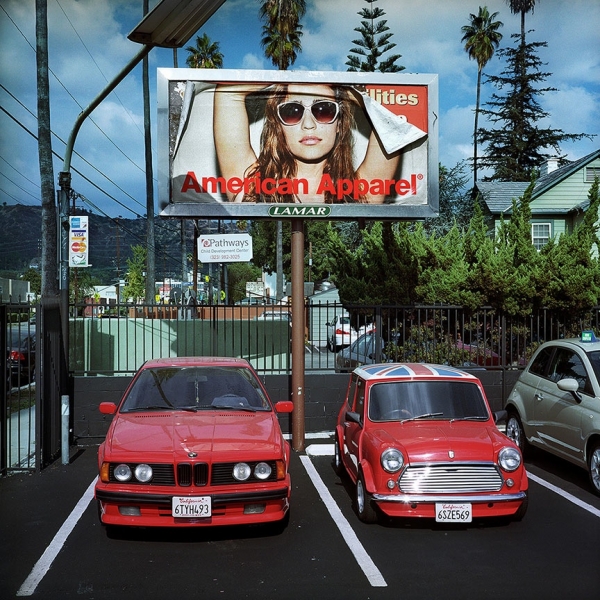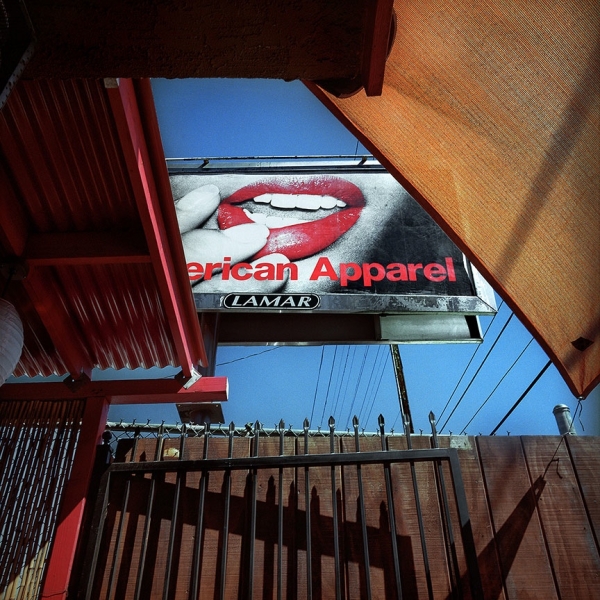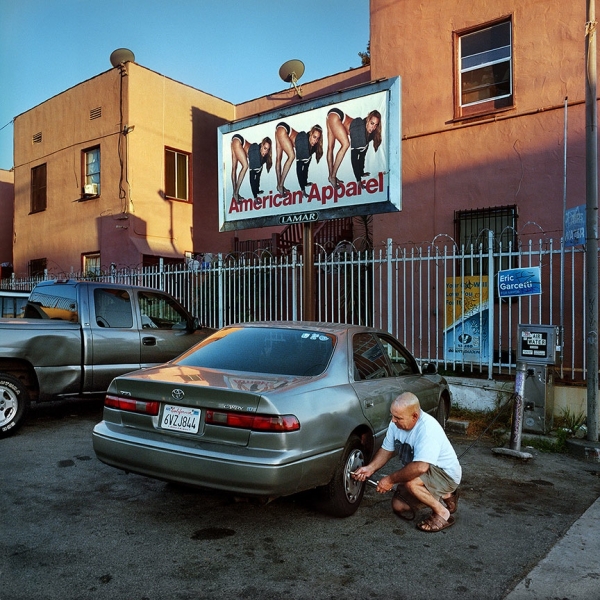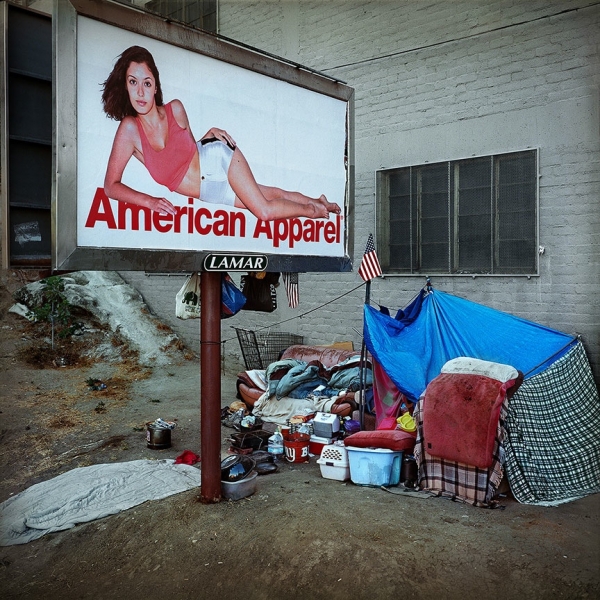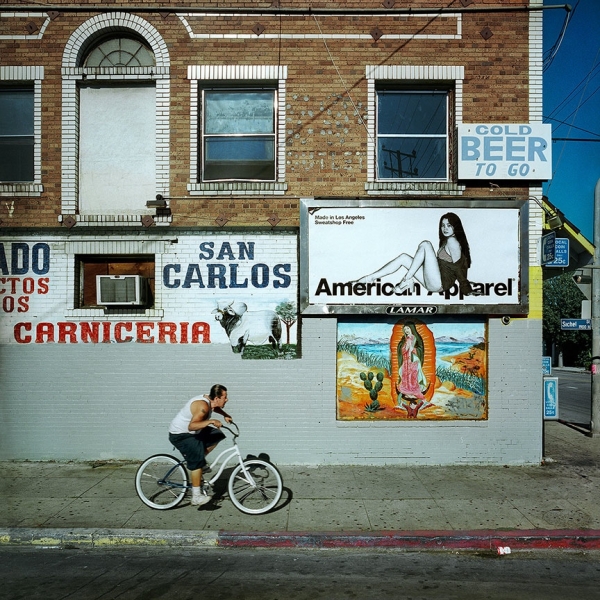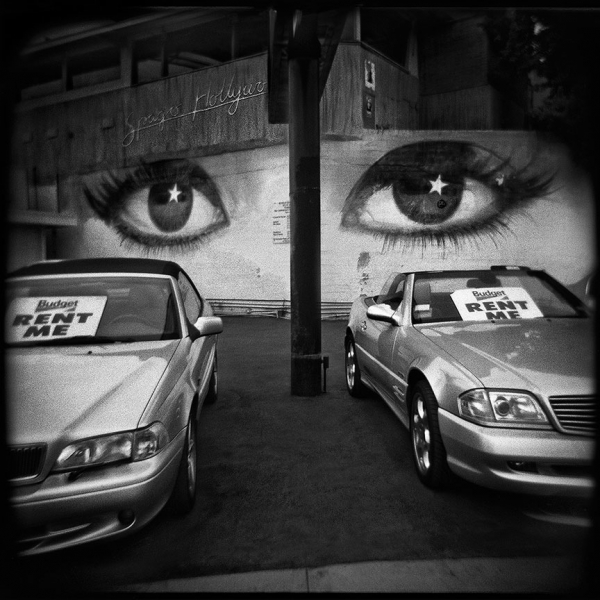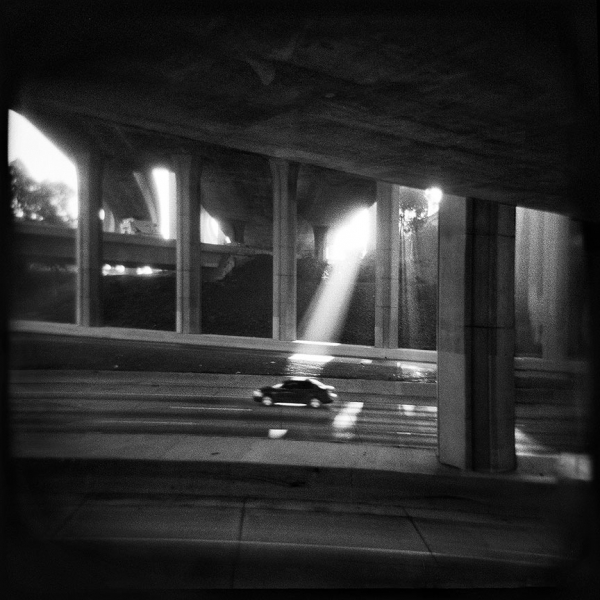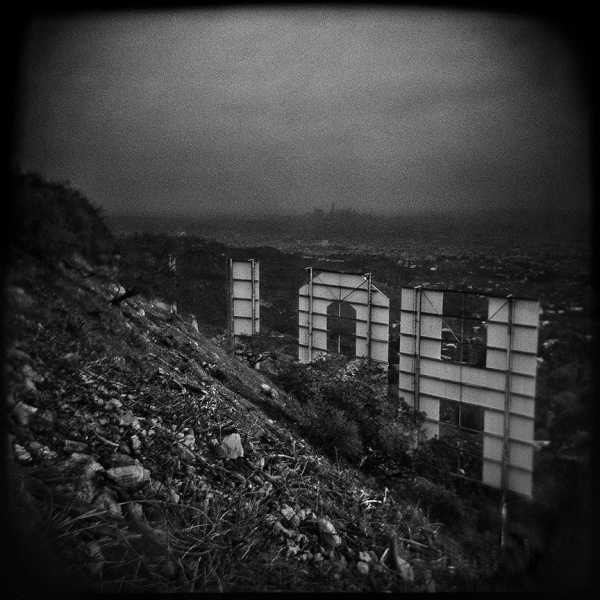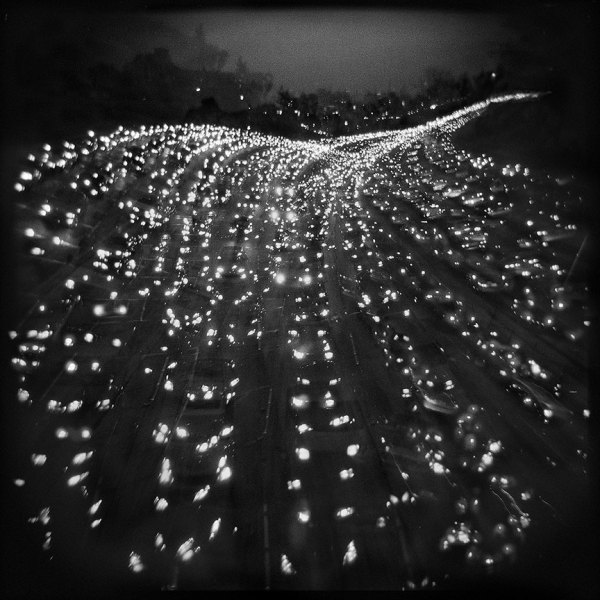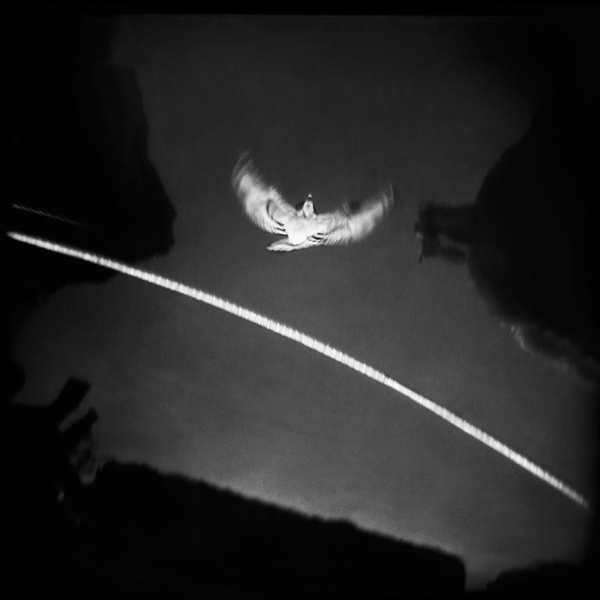Thomas Alleman
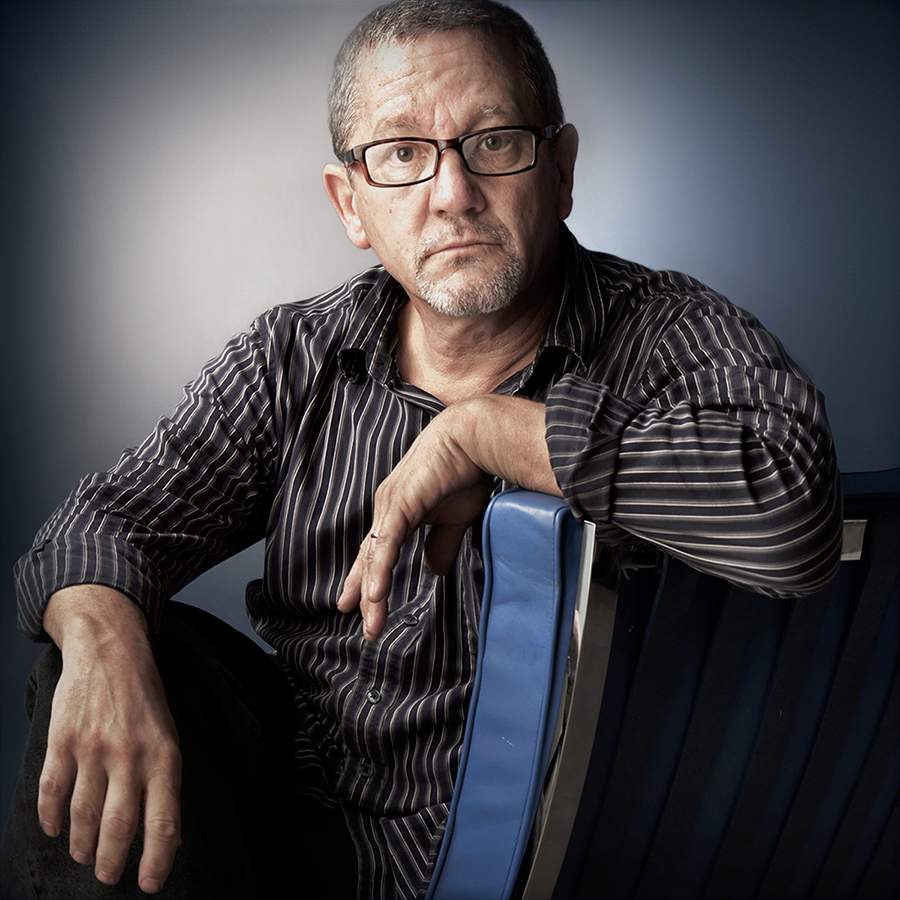
About
Thomas Alleman (www.allemanphoto.com) is a commercial, editorial and fine art photographer living and working in Los Angeles. During a 15 year newspaper career, Tom was a frequent winner of distinctions from the National Press Photographer’s Association, as well as being named California Newspaper Photographer of the Year in 1995 and Los Angeles Newspaper Photographer of the Year in 1996. As a magazine freelancer, his pictures have been published regularly in Time, People, Business Week, Barrons, Smithsonian National Geographic Traveler, and US News & World Report, and have also appeared in Brandweek, Sunset, Harper’s and Travel Holiday. Tom’s series of street photographs, Social Studies, was exhibited widely in Southern California. Sunshine & Noir, his book-length collection of black-and-white urban landscapes made with Holgas in the neighborhoods of Los Angeles, won first prize in the Travel category of the prestigious Photography Book Now competition. Sunshine & Noir had its solo debut at the Afterimage Gallery in Dallas in April 2006, and was exhibited at the Robin Rice Gallery in New York in 2008 and 2013, and at the Blue Sky Gallery in Portland in 2009 and 2015, among other galleries and museums. The American Apparel debuted at the RedLine Art Center in Denver, and Dancing In the Dragon’s Jaws—Tom’s reportage from gay San Francisco in the mid 80s—debuted at the Jewett Gallery in SF in 2012.
Scheduled to Teach
- Street Photography in the 21s Century: New Voices, New Strategies with Thomas Alleman (Hybrid Learning - Six Sessions)
- Meet-Up in LA: Photographing Boyle Heights with Thomas Alleman (Hybrid Learning - Two Sessions)
- The Photographer's Eye: Understanding Vision, Framing and Form with Thomas Alleman (In-Person Learning - Six Sessions)
Gallery
LACP Interviews Thomas Alleman
LACP asks Thomas Alleman ten questions about his background, career in and beliefs about photography.
LACP: What kind of photographer are you?
Thomas Alleman: I’m a freelance photographer, working for magazines and corporations. In that realm, I usually make lit, location portraits of CEOs, athletes, artists and scientists … though, in the last year I’ve been commissioned to do some rather extensive photojournalism, which was a pleasant surprise. Over the last twelve or thirteen years, I’ve been photographing and exhibiting personal projects. I’ve had almost a dozen solo shows, here and abroad, and have been published widely in magazines and blogs, and on websites like the New York Times, the Atlantic Magazine, Elle, and Huffington Post.
LACP: How long have you been shooting?
TA: I began shooting with serious intent about 32 years ago. I made my first paycheck a couple years later, as a part-timer at a chain of suburban newspapers in East Lansing, Michigan.
LACP: Where did you get your training?
TA: I took three or four photography classes while I was an undergraduate at Michigan State, and I was obsessed by and devoted to each one while I was in the midst of it … stayed up all night in the darkroom, spent all my money on film and paper … but, when the semester was over, I abandoned my Minolta SRT 201 and moved on to whatever caught my fancy next: writing courses, philosophy seminars, etc. A year later, I’d rediscover my interest in photography, and sign up for another class, and love it dearly, and then walk away again. I hung around my college town after graduation, writing for and editing a local weekly tabloid, and began making pictures to accompany my own stories. My eye was sharp, I must say, but my technique was lousy … my exposures were always very chancy and nerve-wracking… so I took a class at a local community college, in order to finally nail the specifics of reliable and repeatable results. Since then I’ve been on my own. Everything I’ve learned about lights, lenses, darkrooms and vision I taught myself, at a snail’s pace.
To me, training is about deliberateness and discipline, and it’s guided by a recognition of big picture principals. It’s an integrated program, sheparded by smart people. (Like LACP, of course, and any good vocational school.) However, most of the career photographers I know didn’t learn that way. (Half of us were English majors in college, and just picked up a camera one day, as the legend always goes.) Indeed, as the technology that drives the photo culture continues to evolve at its breakneck pace, we-all continue to train ourselves constantly, out of urgent necessity, in whatever way best suits each individual. (People learn in different ways, and at different rates, and the smart ones learn to master their own processes.) It’s a truism among us: we conceive a project, or take an assignment, that involves a technique or a camera system or a whole sets of moves that we’ve never done before, and we commence a week of staying up half the night, studying and testing and drawing diagrams and testing some more. Thats how the creative class trains itself, in fits and starts.
LACP: When did you know you wanted to devote your life to photography?
TA: I still haven’t quite made that decision; I revisit the debate all the time. Like a dedicated foot-soldier, I’ve taken this long campaign one tour at a time, signing up for the foreseeable future again and again, and bringing total commitment to each round, but always wondering what another life might hold. But those foreseeable futures aren’t a lark: when I was twenty-five, two years seemed like a very brave commitment, and I made it; nowadays, I begin a photo project in full knowledge that it’ll be a four or five year journey, after which I’ll maybe write that novel, finally.
LACP: Did you ever come close to giving up?
TA: My first staff photographer job at a real newspaper job was a long, dreary, rather desperate slog through the wilderness; after a while, I truly thought I’d never get out of that damned town. I never gave up, and never consciously contemplated a career suicide, but do I remember the disdain with which I treated my equipment, as if those beat-up Nikons were the shackles that held me to that grinding life of poverty and hopelessness, and I recall wishing they’d go away, somehow, and leave me to a simpler life. I’d literally throw them into the hatchback of my crappy car, tempting fate to snap or shatter them, and I’d leave the doors unlocked, envisioning my relief, one morning, to find them gone with the wind. But the town I lived in was too small for real thieves to make a living in, and I was stuck with crippled cameras.
After my mother died, I spent a month in North Carolina clearing up her estate. I returned to my little California exile exhausted and dispirited, and very rusty: in those first days back, it seemed I’d forgotten half of what I knew about picture-making, but I knew that, if I spent a week concentrating deliberately, I could get it all back. But it occurred to me: maybe I didn’t want it back. Maybe I shouldn’t reboot the program; maybe I should just let it all dry up and blow away. Of course, I chose to stay the course, and a great many wonderful things have come from that decision, but, to this day, my most recurring dream is about those days, that newspaper, and me, no longer shooting, just hanging around, waiting for the boss to fire me, letting the whole thing wind down into nothing.
LACP: Have you sacrificed anything by being a photographer?
TA: Of course, of course, of course. Everything that my buddy, the dentist, has, I don’t have; in almost every material way, I’m miles behind my neighbor, the schoolteacher, who’s got a paid-off house and a new-ish car and an actual retirement plan. I know very, very few photographers who can say they’ve achieved those old-fashioned middle-class milestones. (Indeed, all that’s becoming more old-fashioned all the time, as is the notion of middle class.) Mostly, I made the huge mistake of not marrying a lawyer or a corporate executive; the photographers who have the best lot in life pay their bills with the spouse’s paycheck. (My lovely wife is also a photographer, and she wishes the same of me: why couldn’t I have been a high school principal?)
One might have great taste in art and culture, and know what’s cool’or authentic; one might have native instincts and a good eye. But it takes a long time for technique and experience to catch up with those sensibilities, so that one can produce good work consistently. The young photographer invariably spends two or three, maybe four years not quite getting it right, and that’s a hard life to live, in a way. While college friends score their first career jobs, and leverage regular paychecks into apartments, cars and vacations, the young photographer is still waiting tables and spending tip money on lenses and external hard-drives, practicing portrait techniques on roommates, always learning, still making work that doesn’t meet the standards of their more sophisticated taste.
Even after one has gotten a foothold and begun to make it—if that ever actually happens—the smart photographer will realize the road ahead is still very, very long, and there’s an infinite amount left to learn. In terms both material and metaphoric, the young photographer—every photographer of any age!—sacrifices stability, a solid sense of accomplishment, any real certainty about the future. Because standards and technologies always change, and clients come and go, and the money is weird, and history is determined to leave most of us behind.
But what else is better than this, in the long run? Having said all that about sacrifice and stability, it’s still true that very few occupations allow one to chart their own course as completely.
LACP: What have you gained by being a photographer?
TA: In short, I’ve gained my dream of life. The vision I had for myself, when I was a teenager, included a big city, an independent, creative lifestyle, and constant work at something that would carry my name. I dreamt that my life and my work would be intertwined, and that one would always reflect, enhance and involve the other. Photography has given me that essential opportunity, and, in that regard, I don’t have a lot of the regrets that many other middle-aged people might have about selling out or giving up. Of course, one always wonders about roads not taken—when I was in high school, I wanted to be a film director, and in college I aspired to become a playwright—but those occupations couldn’t be done in isolation, as photography is; like almost every other craft in the popular culture, those required the cooperation of countless others, and permission and funding from producers, and long stretches of time and trial to bring forth one?s final product. Photography has given me the opportunity to make my own way, to turn on a dime, to create something full-blown and definitive with a minimum of expense, and no need to seek anyone else’s approval. That fits my personality almost exactly, and makes my accidental discovery of photography the best blunder I ever made.
LACP: What classes do you teach at LACP?
TA: I teach The Photographer’s Eye, in which we explore the many fundamental ways in which our visual experience of the three-dimensional world differs from camera vision and the photographs we produce. Through lectures, discussions and shooting assignments, my students learn to acknowledge and accept those differences, and to overcome and exploit them by the deliberate use of the photography’s unique properties. I also teach Photographing in the Social Landscape, which introduces students to that long tradition, and breaks down it’s aspects and processes with presentations and exercises.
LACP: What do you love most about teaching?
TA: The classroom experience is exhilarating, to be sure, and the engagement that good students bring to that three-hour block of time makes it a very intense, very exciting event for me. But I love the preparation, as well: the process of writing a sensible lecture, and producing a Powerpoint that illustrates it, challenges me to interrogate my own experiences and habits, and my beliefs and assumptions about the medium, and every lesson I create becomes a surprising, eye-opening journey into the history of photography and its regular old nuts-and-bolts application.
LACP: What advice would you give someone who is thinking about making a career in photography?
TA: Except for the most brilliant, best-looking and luckiest among you, you will not make it big, or even medium, for many, many years to come. You’ll be lucky to make a living in the first two or three years. Which must seem weird, at the outset, because an attentive beginner can learn a world of stuff in their first class—maybe half of everything they’ll ever need—and in the first year you can figure out, like, 75% of the entire craft. You’ll think you’re almost done! But the next 10% will take four or five years, and the last bit will require a long life behind the lens. This is just a fact, I promise.
As with everything else in life, then, you must keep two opposite conditions in balance: settle in to your long period of gestation and learn to sacrifice most of your time, money and attention to learning this infernal craft—but, try to have a life whenever you can: date, see some movies, read lots of books, get a massage, spend a day at the beach. But then get back to work.
So, be honest with yourself: Is all this travail really what you want? You don’t have to answer yet; you can spend a year figuring out your comfort-level with photography, and in the meantime you’ll at least become a really accomplished amateur. But, after a while you must certainly face the facts: most of what your daily photo life entails is not glamorous or particularly groovy, and swooping into the room with a camera does not make you a cool dude. It’s a bit of a grind, and you better learn to love that. If you truly can become accustomed to that hard road, photography will repay your investment: it can save your life, give it meaning, provide you with countless interesting days and challenges, and make you a better person.
Finally, speaking of better person: know that every aspect of your self—your personality, your grooming, your habits, your skills in other areas—will become crucial parts of your photography career. Developing patience and empathy, learning a language, practicing yoga, improving your writing skills, becoming an informed citizen—all that will actually factor into your photography and your career, believe it or not. So, start working on all that stuff NOW; don’t think you can become A Better You overnight, when someone calls with an assignment; if you develop excellence, competence and maturity sooner rather than later, you’ll have it at your disposal forever.
